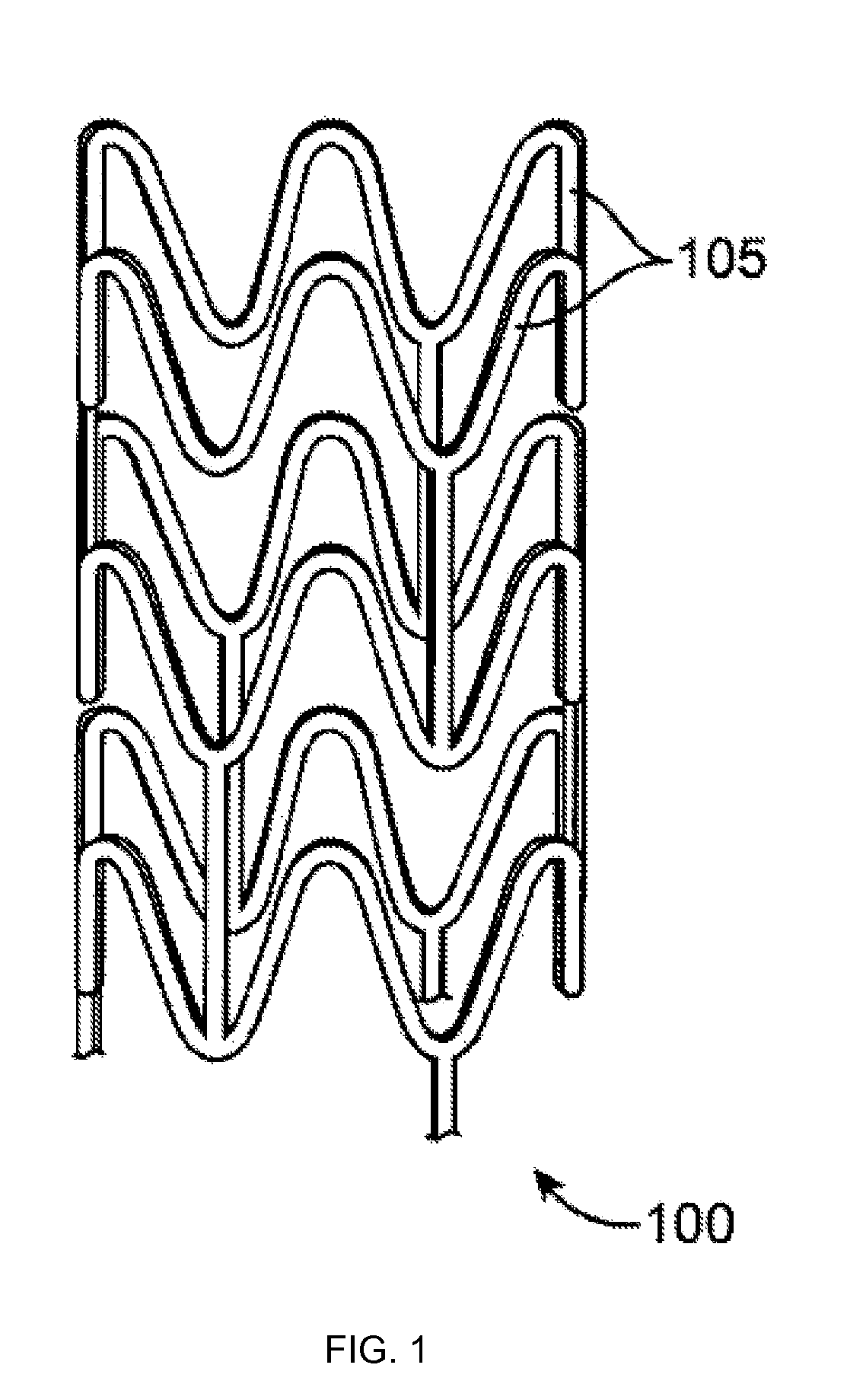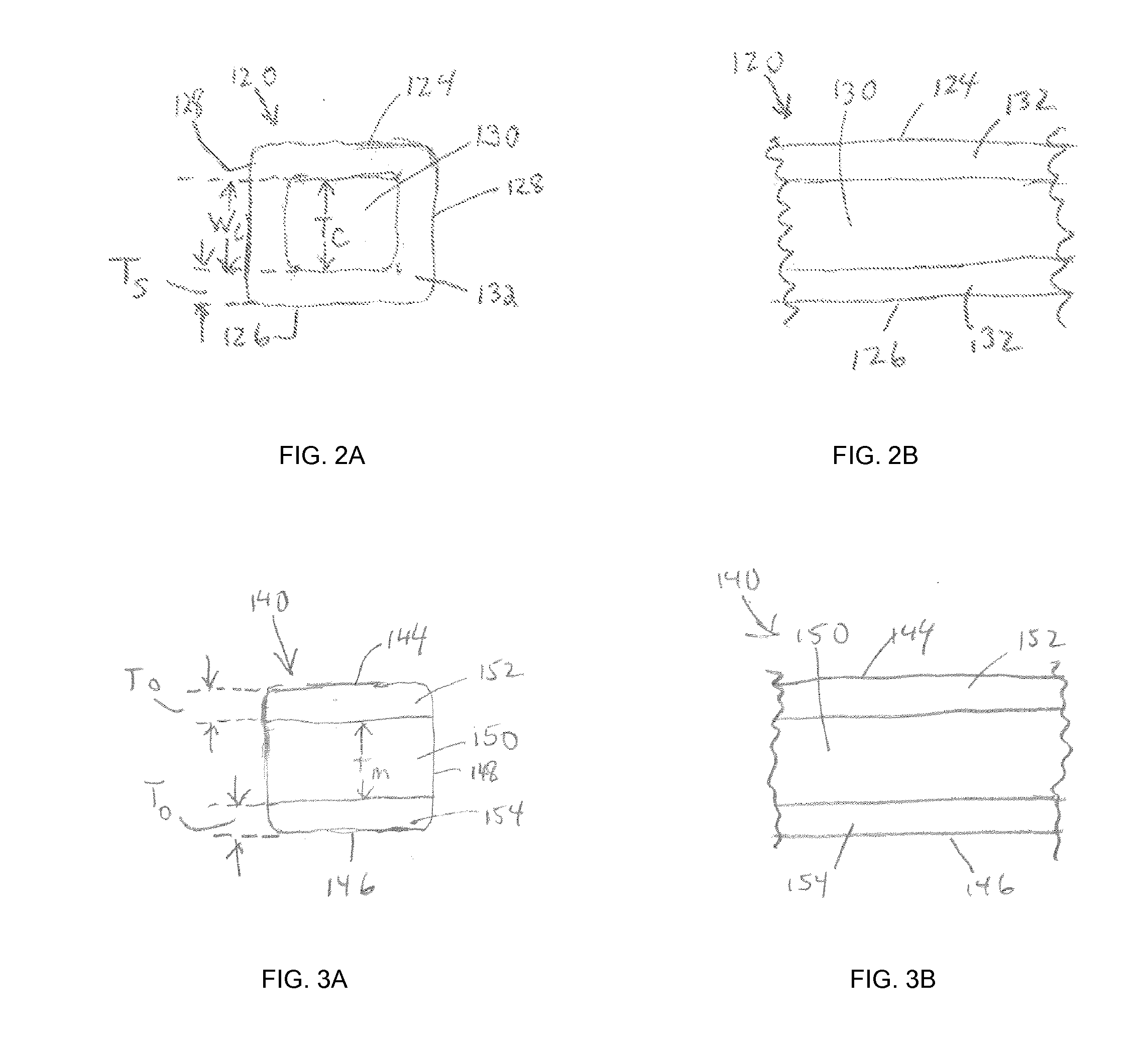Magnesium alloy implants with controlled degradation
- Summary
- Abstract
- Description
- Claims
- Application Information
AI Technical Summary
Benefits of technology
Problems solved by technology
Method used
Image
Examples
Embodiment Construction
[0031]Various embodiments of the present invention relate to stents made from magnesium or magnesium alloys that include additives or barrier coatings that modify the corrosion rate of the stent. These embodiments are applicable to, but are not limited to, self-expandable stents, balloon-expandable stents, stent-grafts, and generally tubular medical devices.
[0032]A stent may include a pattern or network of interconnecting structural elements or struts. FIG. 1 depicts a view of a stent 100. In some embodiments, a stent may include a body, backbone, or scaffolding having a pattern or network of interconnecting structural elements 105. Stent 100 may be formed from a tube (not shown). The structural pattern of the device can be of virtually any design. The embodiments disclosed herein are not limited to stents or to the stent pattern illustrated in FIG. 1. The embodiments are easily applicable to other patterns and other devices. The variations in the structure of patterns are virtually...
PUM
| Property | Measurement | Unit |
|---|---|---|
| Length | aaaaa | aaaaa |
| Length | aaaaa | aaaaa |
| Length | aaaaa | aaaaa |
Abstract
Description
Claims
Application Information
 Login to View More
Login to View More - R&D
- Intellectual Property
- Life Sciences
- Materials
- Tech Scout
- Unparalleled Data Quality
- Higher Quality Content
- 60% Fewer Hallucinations
Browse by: Latest US Patents, China's latest patents, Technical Efficacy Thesaurus, Application Domain, Technology Topic, Popular Technical Reports.
© 2025 PatSnap. All rights reserved.Legal|Privacy policy|Modern Slavery Act Transparency Statement|Sitemap|About US| Contact US: help@patsnap.com



